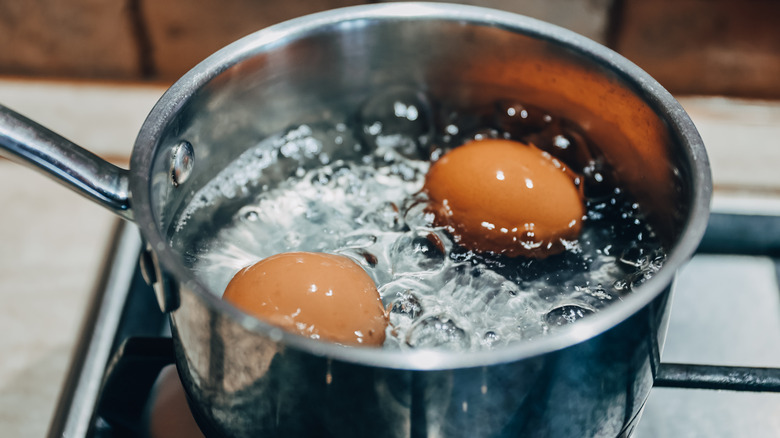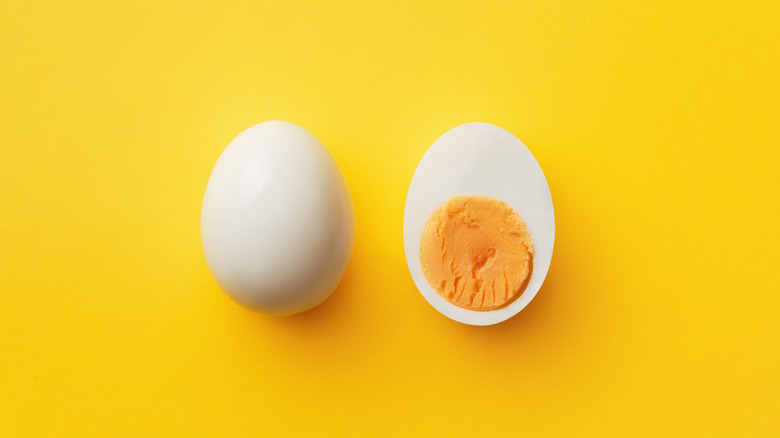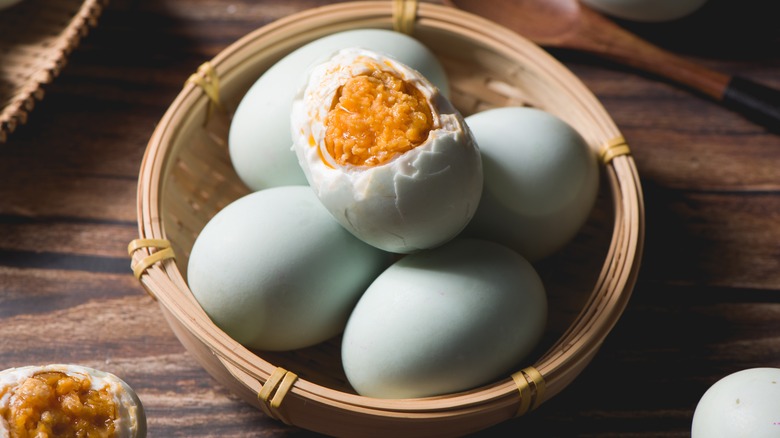Garnish Your Dish With Grated Hard-Boiled Egg For A Rich Finish
Whether or not you eat eggs for breakfast each morning, you have to give them props for being one of the most versatile food staples around. Indeed, the phrase "put an egg on it" has become a rights-free catchphrase across the food world. (The blog Smitten Kitchen, for example, has a whole section devoted to it.) The saying usually refers to an egg that is poached or fried. And while some may never get tired of tucking into a slice of avocado toast with a broken yolk running down the side, it would be remiss not to talk about the underdog: boiled eggs.
Sure, hard- or soft-boiled eggs are a great snack on their own with a little salt and pepper on top, but they can also add an unexpectedly rich and savory finish to countless dishes when grated or finely chopped. It's easy to incorporate hard-boiled eggs into your savory meals, whether a classic French salad or a hearty bowl of soup. There are also methods that can improve your grated eggs by deepening their flavor and texture.
Still, to achieve the best results, there are some things to keep in mind. And once you have a handle on the nuances, you might be surprised by how well this trick upgrades your meals.
An easy topper for savory dishes
Grated eggs are nothing new to the French. Julia Child's Salade Mimosa, which appears in "The French Chef Cookbook," calls for a hard-boiled egg grated through a fine-mesh sieve and served with mixed greens, fresh herbs, and a classic vinaigrette. You could easily apply the same technique to Niçoise salad, tossing some extra grated egg on top.
For an even creamier and more decadent show, carefully remove hardened egg yolks from their boiled white cradles and grate them over soups, pizza, roasted vegetables, toast, or anything that could use a little extra depth, flavor, and color. (You should definitely save the whites and serve them with avocado, salt, pepper, and olive oil.)
Want to get even more flavor out of your grated egg yolks? Try curing them in salt or soy sauce for an umami-packed finishing touch on savory dishes. While it might sound intimidating, it's easy enough to learn.
The cure
Curing egg yolks means using salt to draw out their moisture and amplify their flavor. The result is a firm yolk that tastes like a more intense version of itself, accented by whatever seasonings you may have added to the salt (you can also include a bit of sugar for a slightly candied effect). Not only are cured yolks delicious, but they're also super easy to pass through a grater or sieve because of their cheese-like texture.
The process, while it takes some time, couldn't be simpler. First things first: secure a large amount of sea salt or kosher salt. If you wish, you can use aromatic seasonings for extra flavor, such as black pepper, woody herbs, and lemon zest.
Most recipes call for pouring around 2 cups of salt into an 8-by-8-inch baking dish and gently dropping in nine egg yolks, giving them ample space. (It helps to make little nests by pressing into the salt with a spoon.) Pour another 2 cups of salt on top, taking care to fully cover the yolks (and not break them). After refrigerating for five days, you'll set your oven to its lowest setting and cook the almost-cured yolks for an hour on a piece of parchment paper over a drying rack. The yolks will last for about a month in the fridge.


